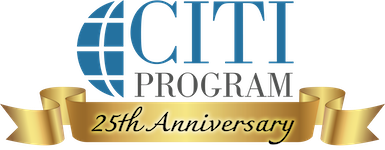The Public Health Service (PHS), Office of Laboratory Animal Welfare (OLAW) recently published guidance on flexibilities for the conduct of semiannual animal facility inspections as well as guidance on grant to protocol and contract to protocol congruence review. These changes were made as a strategy to reduce regulatory burden to institutions. In addition, the U.S. Department of Agriculture (USDA), Animal and Plant Health Inspection Service (APHIS) recently published a requirement for contingency plans designed to safeguard animal welfare in the event of disasters or emergencies as well as revised requirements for research facility registration, ongoing review of activities involving animals, and annual reporting requirements.
This post summarizes some of the key information from these guidance documents and regulatory updates. CITI Program has also updated its Animal Care and Use (ACU) courses that cover this information.
OLAW’s Guidance on Flexibilities for Conducting Semiannual Inspections
Some key points from OLAW’s “Guidance on Flexibilities for Conducting Semiannual Inspections of Animal Facilities” include:
- For areas housing non-Animal Welfare Act (AWA)-regulated species, the Institutional Animal Care and Use Committee (IACUC) may use one individual to perform inspections, as long as that individual is qualified to do so via training and familiarity with the Guide for the Care and Use of Laboratory Animals (the Guide), PHS Policy on Humane Care and Use of Laboratory Animals, and Animal Welfare Regulations (AWR). The person serving in this role does not need to be a member of the IACUC or even an employee of the institution.
- For areas housing AWA-regulated species, two IACUC members must participate in the inspection, but do not need to inspect together.
- Facility inspections may be conducted within 30 calendar days of the six-month interval from the previous inspection, as long as there is no forward drift in terms of scheduling of future site visits.
- Facility inspections may be conducted by IACUC subcommittees as long as participants have no conflicts of interest with the areas or work being done in those areas.
- IACUCs may perform inspections on a staggered schedule such that all relevant areas are inspected at least once every six months.
- IACUC inspections may be unannounced but can also be announced in advance as a way to ensure that key personnel are available during the time of the inspection.
- Facilities housing non-AWA-regulated species may be evaluated by use of videos, photographs, written descriptions, or other remote means. For areas housing AWA-regulated species, only live feed is acceptable.
- An accreditation site visit conducted by AAALAC, International can be applied as a semiannual IACUC inspection if it occurs within the six-month timeframe for the inspection.
OLAW’s Guidance on Grant and Contract to Protocol Congruence Review
Before a grant is awarded to an institution, the National Institutes of Health (NIH) often requires a review for congruence and consistency between the animal use described in a grant application and the associated approved IACUC protocol. In terms of IACUC review, the protocol needs to only indicate a brief description of animal use during years four and five of the grant because the protocol will typically cover only the first three years. A more complete description and update is provided at the time of the three-year protocol renewal.
OLAW notes that there is no requirement for a side-by-side comparison of the grant application and the IACUC protocol. Though institutions are free to adopt their own system for congruence review, an acceptable review of the Vertebrate Animal Section of the grant application may allow reduction of administrative burden in contrast to a system that requires review of multiple sections of the application. In addition, one grant application may be associated with more than a single IACUC protocol, as well as the reverse.
For more information, see OLAW’s “Grant and Contract to Protocol Congruence Review.”
New and Revised USDA Requirements
Effective January 3, 2022, USDA requires research facilities, dealers, and others to develop and implement a contingency plan within 180 days to protect the health and welfare of animals in the event of disasters or emergencies. The essential features of this regulation are that personnel must be trained within 60 days of the plan being put in place with respect to their individual role in executing the plan. While training is an essential part of the plan, documentation of training is not required by the regulation.
The USDA also no longer requires registered research facilities to update their registration information every three years. In addition, IACUCs are no longer required to annually review activities using animals but, instead, must review a resubmission triennially. Further, the Institutional Official or Executive Officer of the institution are no longer required to sign the annual report to USDA. These changes will draw practices toward harmony with those of OLAW.
For more information, see the USDA’s Final Rules on “Handling of Animals; Contingency Plans” and “AWA Research Facility Registration Updates, Reviews, and Reports.”





